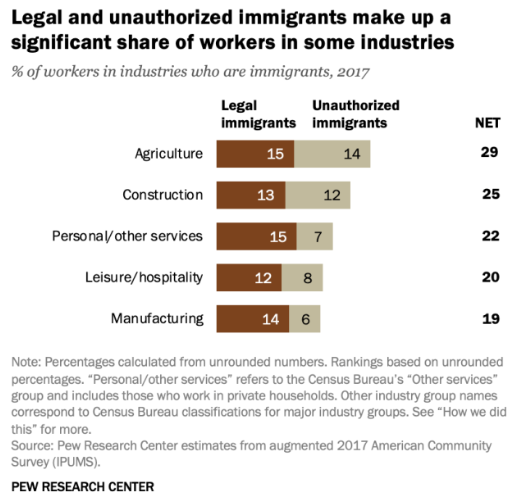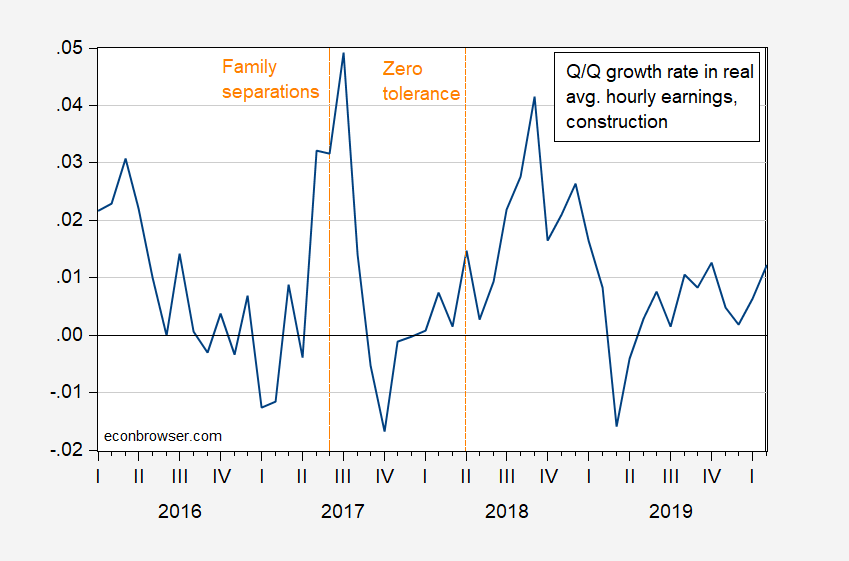Natural (But Stupid) Experiments?
Since the incoming administration has indicated the deportations will start on day one, I thought it of use to consider the sectoral impacts of a policy of mass deportation (aside from macro based ones as discussed here).
First, I consider two graphs from Pew that Torsten Slok/Apollo has recently sent out.


Note the relatively more substantial shares of unauthorized workers in agriculture and construction overall. Within agriculture, consider the shares in food production/food processing.
Second, two observations. If the Trump administration really wants to do something about grocery prices and housing affordability (I must confess I am dubious they care at all about these things), then a policy of mass deportation of unauthorized workers will certainly work against those goals. (If the administration were to proceed on denaturalization as proposed in Project 2025 pp. 143-44, well heck, I have no idea what would happen, quantitatively).
First, think construction costs. A big input is labor (and others include imported products like lumber — so I’m not even considering tariffs). Here’s the evolution of real wages for construction:
(Click on image to enlarge)

Figure 1: Quarter-on-Quarter CPI deflated wage growth in construction, annualized (blue). Source: BLS via FRED, and author’s calculations.
Hence, housing construction costs will jump up in real terms.
(Click on image to enlarge)

Figure 2: Quarter-on-Quarter CPI deflated wage growth in food manufacturing, annualized (blue). Source: BLS via FRED, and author’s calculations.
This is not the wage in agriculture in terms of produce collection. It’s in food processing (think processing chicken). Prices are not going to be going down because of higher wages.
So we know what a little bit of elevated deportations and limited authorized immigration can do. A much more ambitious program to achieve the Trump administration’s ultimate solution — even if only partway — would likely have larger effects.
Note that given the blended nature of many immigrant households (some authorized, some not), mass deportation could also impact the number of authorized immigrants working in these sectors.
More By This Author:
The Return Of Economic Policy Uncertainty
Structural Breaks In The Term Spread-GDP Growth Relationship
Business Cycle Indicators – Mid-November



